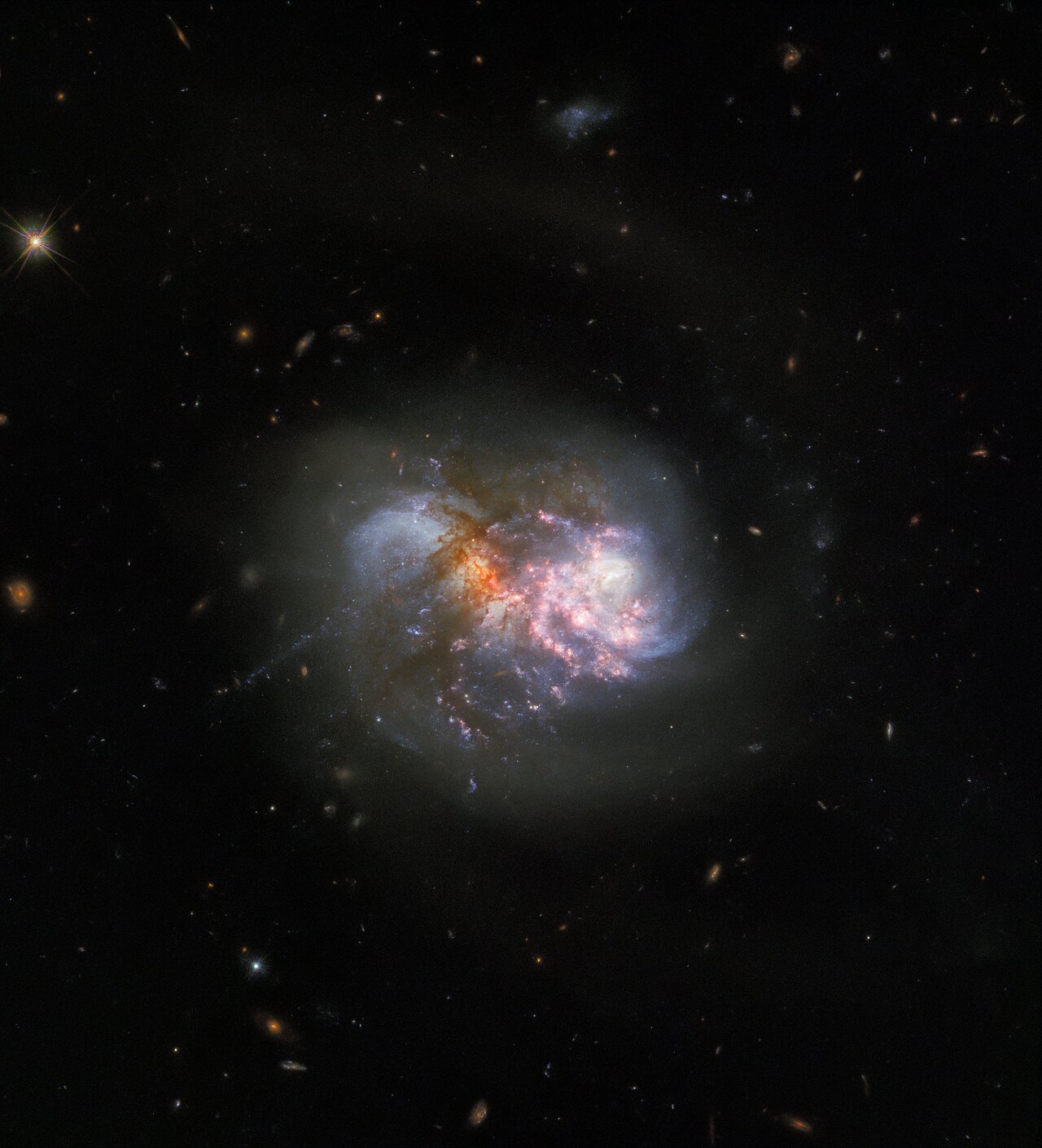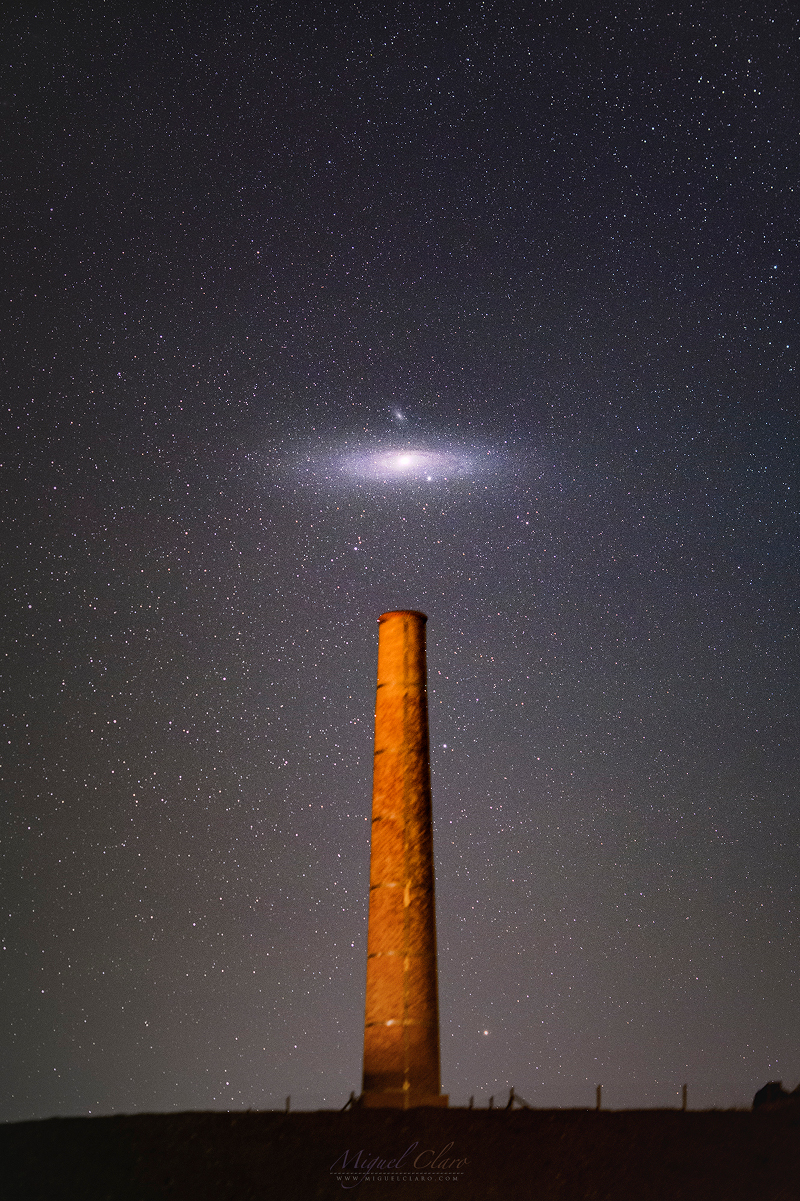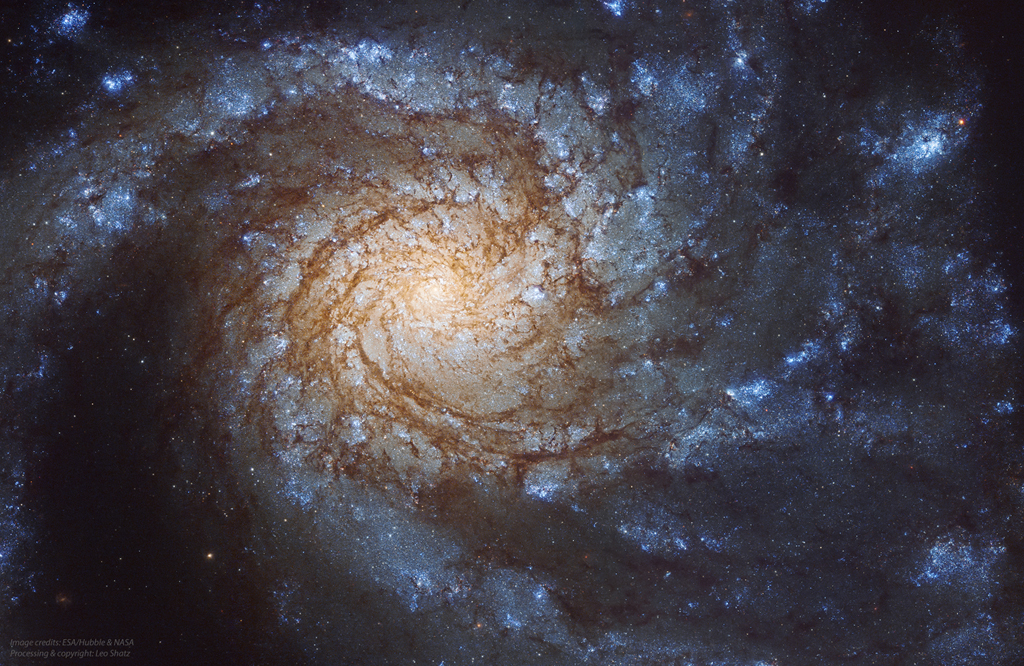Blog
Lester Rallingston “Shad” Collins (June 27, 1910 – June 6, 1978) was an American jazz trumpet player, composer and arranger, who played in several leading bands between the 1930s and 1950s, including those led by Chick Webb, Benny Carter, Count Basie, Lester Young, Cab Calloway and Sam “The Man” Taylor.
Born in Elizabeth, New Jersey, the son of a clergyman, he acquired the nickname of “Shad” in his teens, and by the late 1920s had joined Charlie Dixon‘s band. He also performed with pianist Eddie White, before joining Chick Webb’s band in 1931. In the mid-1930s he played in Teddy Hill‘s band, with whom he toured in Britain and Europe, before joining the Count Basie Orchestra. He performed in Basie’s band at the From Spirituals to Swing concerts in New York City in 1938 and 1939. He also worked in the late 1930s in bands led by Benny Carter, Lester Young and Don Redman, among others.
https://www.youtube.com/watch?v=GT_2Ev9qf1w
more...A cataclysmic cosmic collision takes centre stage in this Picture of the Week. The image features the interacting galaxy pair IC 1623, which lies around 275 million light-years away in the constellation Cetus (The Whale). The two galaxies are in the final stages of merging, and astronomers expect a powerful inflow of gas to ignite a frenzied burst of star formation in the resulting compact starburst galaxy. This interacting pair of galaxies is a familiar sight; Hubble captured IC 1623 in 2008 using two filters at optical and infrared wavelengths using the Advanced Camera for Surveys. This new image incorporates new data from Wide Field Camera 3, and combines observations taken in eight filters spanning infrared to ultraviolet wavelengths to reveal the finer details of IC 1623. Future observations of the galaxy pair with the NASA/ESA/CASA James Webb Space Telescope will shed more light on the processes powering extreme star formation in environments such as IC 1623. Links Video of Clash of the Titans

James Burke “St. Louis Jimmy” Oden (June 26, 1903 – December 30, 1977) was an American blues singer and songwriter.
Oden was born in Nashville, Tennessee, United States. His parents were Henry Oden, a dancer, and Leana West, although both had died before their son reached the age of eight. He sang and taught himself to play the piano in childhood. In his teens, he left home for St. Louis, where piano-based blues was prominent. He developed his vocal talents and began performing with the pianist Roosevelt Sykes. After more than ten years playing in and around St. Louis, in 1933 he and Sykes moved to Chicago.
In Chicago, he was nicknamed St. Louis Jimmy and had a solid performing and recording career for the next four decades. Chicago became his home, but Oden traveled with blues players throughout the United States. He recorded many records, his best-known being the 1941 Bluebird release “Goin’ Down Slow“. Oden’s songs “Take the Bitter with the Sweet” and “Soon Forgotten” were recorded by his friend Muddy Waters.[2]
“Florida Hurricane” was released in 1948 on Aristocrat Records. The song featured Muddy /Waters on guitar and Sunnyland Slim on piano.[1] In 1949, Oden partnered with Joe Brown to form a small recording company, J.O.B. Records. Oden appears to have ended his involvement within a year, but with other partners the company remained in business until 1974.
He spent less time performing after being in a car crash in 1957. Songs written later in his career include “What a Woman!” Oden released the album Goin’ Down Slow on Prestige-Bluesville in 1960. He performed as a vocalist on three songs recorded for an Otis Spann session in 1960. These tracks were released on the album Walking the Blues, re-released as a Candid CD (CCD 79025) in 1989.
Oden died of bronchopneumonia in 1977, at the age of 74, and was interred in Restvale Cemetery, in Alsip, Illinois, near Chicago.
more...Reginald “Reggie” Workman (born June 26, 1937 in Philadelphia, Pennsylvania) is an American avant-garde jazz and hard bop double bassist, recognized for his work with both John Coltrane and Art Blakey.
Early in his career, Workman worked in jazz groups led by Gigi Gryce, Donald Byrd, Duke Jordan and Booker Little. In 1961, Workman joined the John Coltrane Quartet, replacing Steve Davis. He was present for the saxophonist’s Live at the Village Vanguard sessions, and also recorded with a second bassist (Art Davis) on the 1961 album, Olé Coltrane. Workman left Coltrane’s group at the end of the year, following a European tour.
In 1962, Workman joined Art Blakey‘s Jazz Messengers (replacing long-time Blakey bassist Jymie Merritt), and worked alongside Freddie Hubbard, Wayne Shorter, and Cedar Walton for most of this period. Workman left Blakey’s group in 1964.
Workman also played with James Moody, Yusef Lateef, Pharoah Sanders, Herbie Mann and Thelonious Monk. He has recorded with Archie Shepp, Lee Morgan and David Murray. Workman, with pianist Tommy Flanagan and drummer Joe Chambers, formed The Super Jazz Trio in 1978.
He is currently a professor at The New School for Jazz and Contemporary Music in New York City, and is a member of the group, Trio 3, with Oliver Lake and Andrew Cyrille.
Workman has been a resident of Montclair, New Jersey.
more...Robert David Grusin (born June 26, 1934) is an American composer, arranger, producer, and pianist. He has composed many scores for feature films and television, and has won numerous awards for his soundtrack and record work, including an Academy Award and ten Grammy Awards. He is the co-founder of GRP Records.
Grusin was born in Littleton, Colorado to Henri and Rosabelle (née de Poyster) Grusin. His mother was a pianist and his father was a violinist from Riga, Latvia. He has one Jewish parent.
He studied music at the University of Colorado at Boulder and was awarded his degree in 1956. His teachers included Cecil Effinger and Wayne Scott, pianist, arranger and professor of jazz.
more...Big Bill Broonzy (born Lee Conley Bradley, June 26, 1903 – August 14, 1958) was an American blues singer, songwriter and guitarist. His career began in the 1920s, when he played country blues to mostly African-American audiences. Through the 1930s and 1940s he successfully navigated a transition in style to a more urban blues sound popular with working-class African-American audiences. In the 1950s a return to his traditional folk-blues roots made him one of the leading figures of the emerging American folk music revival and an international star. His long and varied career marks him as one of the key figures in the development of blues music in the 20th century.
Broonzy copyrighted more than 300 songs during his lifetime, including both adaptations of traditional folk songs and original blues songs. As a blues composer, he was unique in writing songs that reflected his rural-to-urban experiences.
Born Lee Conley Bradley, he was one of the 17 children of Frank Broonzy (Bradley) and Mittie Belcher. The date and place of his birth are disputed. Broonzy claimed to have been born in Scott, Mississippi, but a body of emerging research compiled by the blues historian Robert Reisman suggests that he was born in Jefferson County, Arkansas. Broonzy claimed he was born in 1893, and many sources report that year, but family records discovered after his death suggested that the year was 1903.
more...The Andromeda Galaxy, 2.5 million light years away, is the most distant object easily seen by the unaided eye. Other denizens of the night sky, like stars, clusters, and nebulae, are typically hundreds to thousands of light-years distant. That’s far beyond the Solar System but well within our own Milky Way Galaxy. Also known as M31, the external galaxy poses directly above a chimney in this well-planned deep night skyscape from an old mine in southern Portugal. The image was captured in a single exposure tracking the sky, so the foreground is slightly blurred by the camera’s motion while Andromeda itself looms large. The galaxy’s brighter central region, normally all that’s visible to the naked-eye, can be seen extending to spiral arms with fainter outer reaches spanning over 4 full moons across the sky. Of course in only 5 billion years or so, the stars of Andromeda could span the entire night sky as the Andromeda Galaxy merges with the Milky Way.

Joe Chambers (born June 25, 1942 in Chester, Pennsylvania) is an American jazz drummer, pianist, vibraphonist and composer. He attended the Philadelphia Conservatory for one year. In the 1960s and 1970s Chambers gigged with many high-profile artists such as Eric Dolphy, Charles Mingus, Wayne Shorter, and Chick Corea. During this period, his compositions appeared on some of the albums in which he made guest appearances, such as those with Freddie Hubbard and Bobby Hutcherson. He has released eight albums as a bandleader and been a member of several incarnations of Max Roach‘s M’Boom percussion ensemble.
He has also taught, including at the New School for Jazz and Contemporary Music in New York City, where he leads the Outlaw Band. In 2008, he was hired to be the Thomas S. Kenan Distinguished Professor of Jazz in the Department of Music at the University of North Carolina Wilmington.
more...Clifton Chenier (June 25, 1925 – December 12, 1987), a Louisiana French-speaking native of Leonville,[3] Louisiana, near Opelousas, was an eminent performer and recording artist of zydeco, which arose from Cajun and Creole music, with R&B, jazz, and blues influences. He played the accordion and won a Grammy Award in 1983. He was known as the King of Zydeco, and also billed as the King of the South.
Chenier began his recording career in 1954, when he signed with Elko Records and released Cliston’s Blues , a regional success. In 1955 he signed with Specialty Records and garnered his first national hit with his label debut “Ay-Tete Fi” (Hey, Little Girl) (a cover of Professor Longhair‘s song).[1] The national success of the release led to numerous tours with popular rhythm and blues performers such as Ray Charles, Etta James, and Lowell Fulson. He also toured in the early days with Clarence Garlow, billed as the Two Crazy Frenchmen.[6] Chenier was signed with Chess Records in Chicago, followed by the Arhoolie label.
more...Johnny Henry Smith II (June 25, 1922 – June 11, 2013) was an American cool jazz and mainstream jazz guitarist. He wrote “Walk, Don’t Run” in 1954. In 1984, Smith was inducted into the Alabama Jazz Hall of Fame.
During the Great Depression, Smith’s family moved from Birmingham, Alabama, where Smith was born, through several cities, ending up in Portland, Maine. Smith taught himself to play guitar in pawnshops, which let him play in exchange for keeping the guitars in tune. At thirteen years of age he was teaching others to play the guitar. One of Smith’s students bought a new guitar and gave him his old guitar, which became the first guitar Smith owned. Smith joined Uncle Lem and the Mountain Boys, a local hillbilly band that travelled around Maine, performing at dances, fairs, and similar venues. Smith earned four dollars a night. He dropped out of high school to accommodate this enterprise.
more...The performance of soleá singing has guitar and clapping accompaniment. Like many of the flamenco styles, it has a formal structure that responds to the following model:
A guitar introduction, accompanied by a departure ayeo (the singer’s famous ‘ay ay ay’).
The cante (singing), made up of various types such as the brave cante and auction, accompanied by the guitarist’s improvisation collected under the name of “falsetas”, which appear interspersed during the performance.
The closing of the performance, given the time in which it is performed, causes a silence that encourages the public to broadcast the famous “olé”.
As for the metric, the soleá shares a great similarity with the seguiriyas, with a 3 × 4 rhythm and a twelve-beat measure, which are divided into two of six. The stanza is made up of four or three octosyllabic verses and its theme evokes deep and sad feelings.
more...Grand design spiral galaxy Messier 99 looks majestic on a truly cosmic scale. This recently processed full galaxy portrait stretches over 70,000 light-years across M99. The sharp view is a combination of ultraviolet, visible, and infrared image data from the Hubble Space Telescope. About 50 million light-years distant toward the well-groomed constellation Coma Bernices, the face-on spiral is a member of the nearby Virgo Galaxy Cluster. Also cataloged as NGC 4254, a close encounter with another Virgo cluster member has likely influenced the shape of its well-defined, blue spiral arms.

Michael John Kells Fleetwood (born 24 June 1947) is a British musician. He is best known as the drummer, co-founder, and leader of the rock band Fleetwood Mac. Fleetwood, whose surname was merged with that of the group’s bassist John “Mac” McVie to form the name of the band, was inducted into the Rock and Roll Hall of Fame in 1998.
Born in Redruth, Cornwall, Fleetwood lived in Egypt and Norway for much of his childhood years as his father travelled with the Royal Air Force. Choosing to follow his musical interests, Fleetwood travelled to London at the age of 15, eventually combining with Peter Green, Jeremy Spencer and Bob Brunning, at Green’s behest, to become the first incarnation of Fleetwood Mac. Fleetwood would remain the only member to stay with the band through its ever-changing line-up.
After several album releases and line-up changes, the group moved to the United States in 1974 in an attempt to boost the band’s success. Here Fleetwood invited Lindsey Buckingham and Stevie Nicks to join. Buckingham and Nicks contributed to much of Fleetwood Mac’s later commercial success, including the celebrated album Rumours, while Fleetwood’s own determination to keep the band together was essential to the band’s longevity. He has also enjoyed a solo career, published written works, and flirted briefly with acting and vinification, as well as opened blues-themed restaurants in Alexandria, Virginia and Hawaii.
https://www.youtube.com/watch?v=wgmRb3MlpHQ
more...Geoffrey Arnold Beck (born 24 June 1944) is an English rock guitarist. He is one of the three noted guitarists to have played with the Yardbirds (the other two being Eric Clapton and Jimmy Page). Beck also formed the Jeff Beck Group and with Tim Bogert and Carmine Appice, he formed Beck, Bogert & Appice.
Much of Beck’s recorded output has been instrumental, with a focus on innovative sound, and his releases have spanned genres ranging from blues rock, hard rock, jazz fusion, and a blend of guitar-rock and electronica. Although he recorded two hit albums (in 1975 and 1976) as a solo act, Beck has not established or maintained the sustained commercial success of many of his contemporaries and bandmates. However, he has recorded with many artists.
He was ranked fifth in Rolling Stone‘s list of the “100 Greatest Guitarists of All Time” and the magazine, upon whose cover Beck has appeared three times, has described him as “one of the most influential lead guitarists in rock”. He is often called a “guitarist’s guitarist”. Beck has earned wide critical praise and received the Grammy Award for Best Rock Instrumental Performance six times and Best Pop Instrumental Performance once. In 2014 he received the British Academy’s Ivor Novello Award for Outstanding Contribution to British Music. Beck has been inducted into the Rock and Roll Hall of Fame twice: as a member of the Yardbirds (1992) and as a solo artist (2009).
more...
George Gruntz (24 June 1932 – 10 January 2013) was a Swiss jazz pianist, organist, harpsichordist, keyboardist, and composer known for the George Gruntz Concert Big Band and his work with Phil Woods, Rahsaan Roland Kirk, Don Cherry, Chet Baker, Art Farmer, Dexter Gordon, Johnny Griffin, and Mel Lewis.
Gruntz, who was born in Basel, Switzerland, was also an accomplished arranger and composer, having been commissioned by many orchestras and symphonies. From 1972 to 1994 he served as artistic director of JazzFest Berlin.
more...More Posts
- Jimmy Yancey
- World Fusion Yasmine Hamdan
- Daily Roots Bobby Melody
- Happy Presidents Day 2024
- Rhythm Roots Residency @ Saint Therese Senior Living of Woodbury
- Cosmos IC 3476
- Lou Christie
- Smokey Robinson
- Louis “Kid Shots” Madison
- World Drumming Akwaaba Drummers
- Daily Roots U Brown
- Echos of Freedom Eldridge Cleaver
- Cosmos Hoag’s Object H1
- Randy Crawford
- Irma Thomas
- World Music Fanfare Ciocarlia
- Daily Roots Dr Alimantado
- Echos of Freedom by Alice Walker
- Miles Davis
- Cosmos Comet 12P/Pons-Brooks